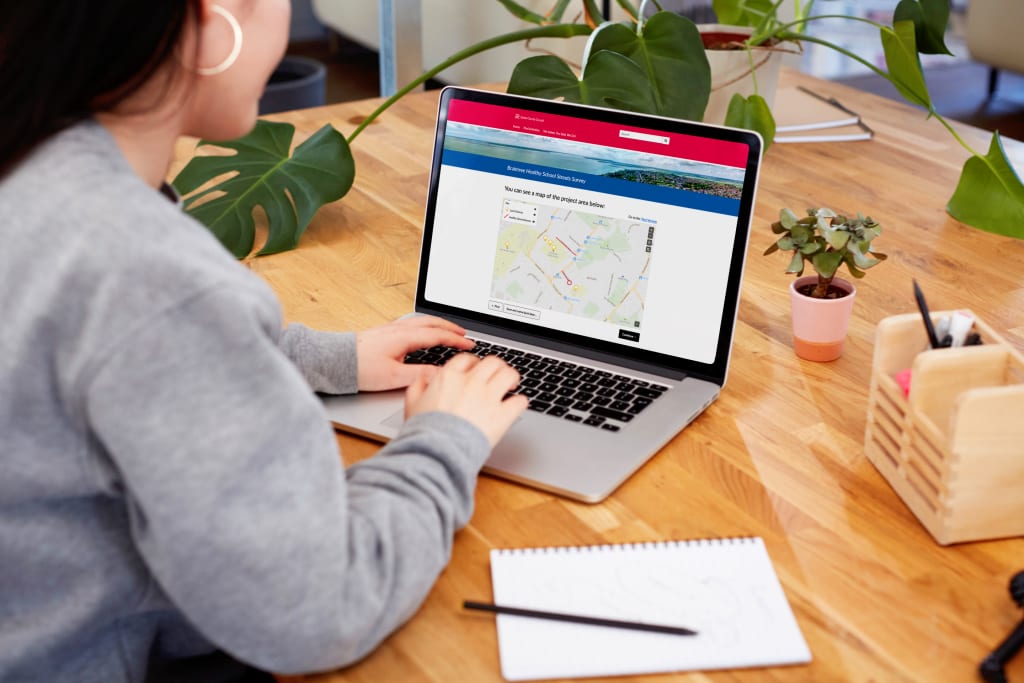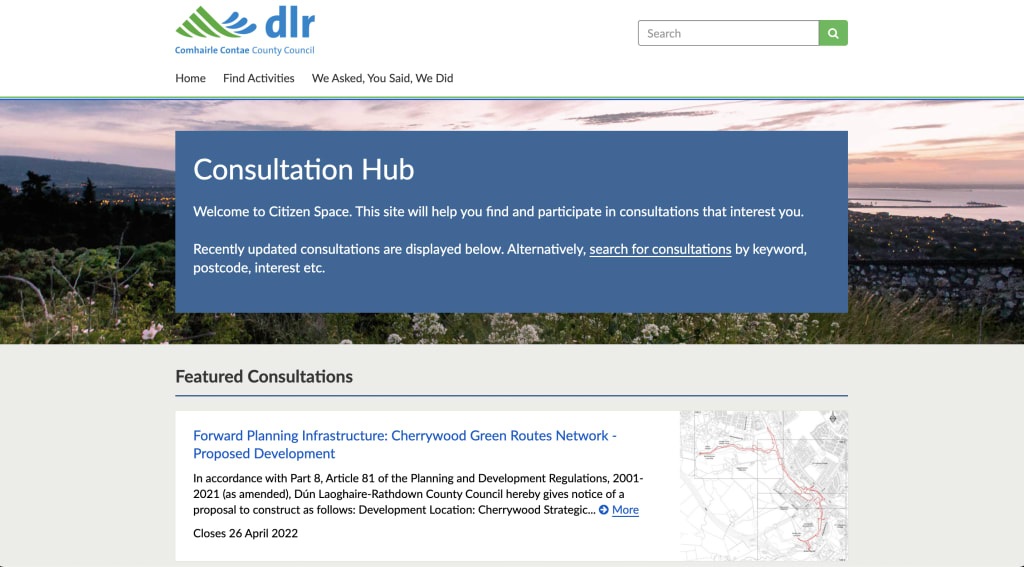
Over the last few years, governments have increasingly realised the importance of including citizens in democratic decision-making. While there are certain checks and balances required by law, the actual value of citizen input is only now being properly appreciated.
Citizen engagement is a necessary and integral part of government process as it is entirely necessary to listen to public opinions and take them into account. In doing so, stakeholders can begin to build a future that considers different communities, demographics and the appropriate placemaking for a sustainable future.
What is Citizen Engagement?
Citizen engagement is the process of central and local government organisations or public sector bodies involving individuals or groups of people in the decision making process of activities, or initiatives that affect their lives, communities, or society at large. It encompasses various methods and approaches aimed at encouraging active involvement, input, and collaboration from citizens in areas such as governance, public policy, urban planning, social services, and community development, usually via statutory or public consultations.
Citizen engagement is about developing a relationship between citizens and governments. That way, individuals feel as though their input is heard and, in turn, that they can hold organisations accountable for decisions made.
What is Citizen Participation?
Citizen participation is the active involvement of individuals or groups on specific activities or initiatives in their community. This participation is driven by the citizens themselves, who attend public meetings, engage with community projects, vote in elections, and so on.
Citizen participation is usually a one-off event or occurrence where citizens provide specific input to government organisations and public sector bodies.
Citizen Engagement Vs. Participation: What’s The Difference?

The key difference is that citizen engagement is initiated by the people in power – the government. They formally address citizens and ask them to provide input via tools they provide. This will usually be via answering specific questions, or giving opinions on set initiatives.
Whereas in citizen participation, the engagement comes from the general public. They reach out and go to specific events, vote, or provide more informal feedback, usually in a more discussion-based format.
While citizen engagement initiatives look to creating a long-term relationship, and encourage deeper levels of involvement, citizen participation is usually a one-off event, or sporadic events where citizens share their thoughts.
But both have the same goal: better communication between government and the public. Each are collaborative and both are necessary to facilitating two-way conversations.
Why is Citizen Engagement Important?
As per Arnstein’s Ladder of Participation, democratic engagement is essential in making every citizen feel as though their voices are heard. But it needs to go further; citizen engagement needs to actively be shown as worthwhile, with evidence that public opinions are taken into consideration.
An essential part of citizen engagement, and one of the four gunning principles for public consultations, is transparency from the government in how decisions are made, and what is taken into account. To do this, information must be provided to the public in a way that’s accessible and easy to understand by people of all ability levels. This builds trust and makes institutions accountable to the public.
Common Challenges in Citizen Engagement

It’s not as simple as 123, even nowadays when we have technology to rely on to help. Which we do, heavily. With the advent of third-party citizen engagement apps, technology has opened borders and boundaries, making it far easier to create systems and platforms that are available to a wider percentage of the population.
But there are still common challenges that arise in the path to fully inclusive citizen engagement and deliberative democracy.
Accessibility: There is still a digital divide in today’s society. Those in rural communities, or struggle with disabilities, are elderly, low-income or non-native English speakers struggle to access online systems. That’s why all statutory consultations should be available in multiple formats, not just online, and in plain English that anyone can read and understand.
Resistance to change: Stakeholders can sometimes be unwilling to adopt newer, progressive ways of engaging citizens, preferring to rely on the old tried-and-true methods of participation. Unfortunately, this is more likely to marginalise and limit opportunities for collaboration.
Closing the feedback loop: Governments still struggle to close the citizen feedback loop and demonstrate that they’ve listened to citizen input. Third-party apps help facilitate this, but require the stakeholders to have established reporting mechanisms in their consultations.
Awareness: Despite checks and balances existing, a large majority of the public are simply unaware that they have these opportunities to meaningfully contribute to changes in their community. Unless you actively seek out participation yourselves, there’s a large chance you won’t ever hear of a public consultation taking place.
Strategies and Best Practices for Citizen Engagement in Consultations

As well as following the four gunning principles that ensure your consultation is accessible, informative, collaborative and holds stakeholders accountable; there are other steps that should be taken when ensuring the fairness of a public consultation and the public’s ability to contribute.
But there are other best practices when conducting a citizen engagement consultation:
Use a citizen engagement platform
Citizen engagement platforms, like Delib’s Citizen Space, streamline and enhance public engagement. They’re accessible, provide an easy way to offer input, and encourage increased engagement from all public demographics.
Citizen engagement platforms cut out the hassle of contributing to discussions and consultations, you don’t need to leave your house or spend hours diving through complicated policy documents. By using technology, you are lowering the barriers to citizen participation so your answer base should naturally be more indicative of the general population.
This allows stakeholders to close the feedback loop, showing citizens how their responses were considered and what changes were made accordingly. This allows the average person to really feel like their contribution was meaningful, further encouraging them to engage again in future initiatives.
Make all documentation accessible
It may be a common challenge encountered in citizen engagement practices, but it’s also an important best practice. Information on any topic where you are asking for citizen input should be in plain English and easily accessible. Where possible, make information available in multiple languages and clearly lay out the intentions of the public consultation and prospective outcomes.
Citizen engagement platforms are helpful here too, as they can present the information in multiple ways and must meet certain accessibility standards, making them universally (or nearly) available to all.
Offer multiple channels for engagement
As great as citizen engagement platforms are, they need to work alongside other initiatives for a fully accessible consultation. Consider other methods, community outreach, surveys, notices in public areas etc. to reach as many people as possible.
Close the feedback loop
Show the public that citizen engagement is meaningful. Keep them informed during every step of the process and clearly lay out the impact their participation had on the entire decision-making process. At the end of the consultation, provide clear outcomes and address any questions or concerns that arose along the way.
Good Examples of Citizen Engagement in Government Consultations
Buckinghamshire City Council

Buckinghamshire city council have really embraced the power of citizen engagement. Using Citizen Space, they now run all their consultations through the platform, providing both offline and online elements so anyone can have their say.
Through geospatial mapping, they’ve provided the public with visual aids for changes they want to make in their community, and close the feedback loop using the “We Asked, You Said, We Did” section to show how public opinion influenced decision-making.
In using Citizen Space, Buckinghamshire have successfully created an online hub for opinions to be heard. In 2023 alone, they ran 65 consultations through the platform, hugely increasing engagement rates.
Dún Laoghaire-Rathdown Council, ROI

Before embracing the power of citizen engagement platforms, Dún Laoghaire-Rathdown council were getting extremely small amounts of engagement due to their basic processes. In one of their biggest projects, a €36m cultural development centre and library, they only received 33 responses to their statutory consultation.
After establishing their need to adhere to best practices and provide digital engagement access, they started using Citizen Space. From small double digits, they were suddenly receiving thousands of replies and submissions, because they provided a way for citizen engagement to be timely and accessible.